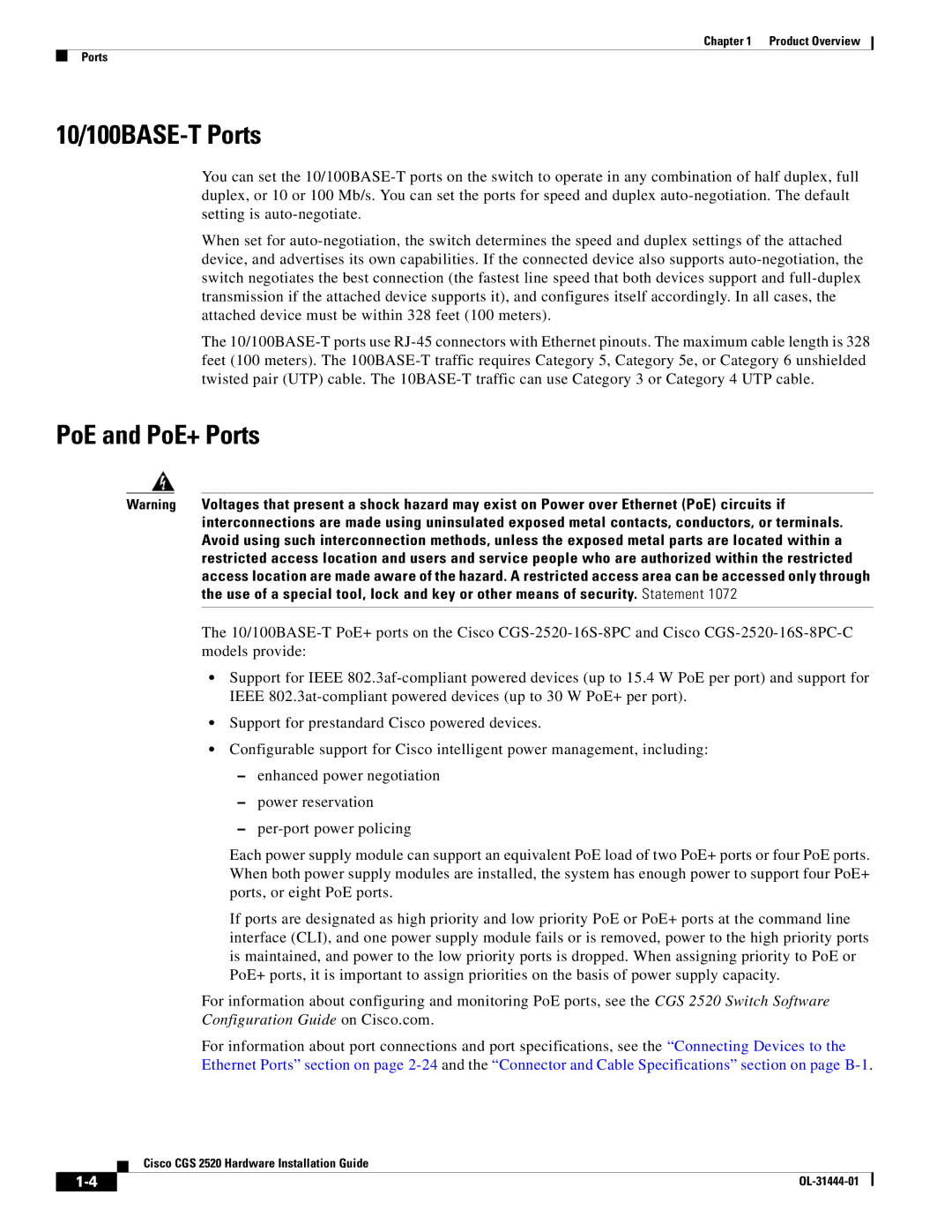
Chapter 1 Product Overview
Ports
10/100BASE-T Ports
You can set the
When set for
The
PoE and PoE+ Ports
Warning Voltages that present a shock hazard may exist on Power over Ethernet (PoE) circuits if interconnections are made using uninsulated exposed metal contacts, conductors, or terminals. Avoid using such interconnection methods, unless the exposed metal parts are located within a restricted access location and users and service people who are authorized within the restricted access location are made aware of the hazard. A restricted access area can be accessed only through the use of a special tool, lock and key or other means of security. Statement 1072
The
•Support for IEEE
•Support for prestandard Cisco powered devices.
•Configurable support for Cisco intelligent power management, including:
–enhanced power negotiation
–power reservation
–
Each power supply module can support an equivalent PoE load of two PoE+ ports or four PoE ports. When both power supply modules are installed, the system has enough power to support four PoE+ ports, or eight PoE ports.
If ports are designated as high priority and low priority PoE or PoE+ ports at the command line interface (CLI), and one power supply module fails or is removed, power to the high priority ports is maintained, and power to the low priority ports is dropped. When assigning priority to PoE or PoE+ ports, it is important to assign priorities on the basis of power supply capacity.
For information about configuring and monitoring PoE ports, see the CGS 2520 Switch Software Configuration Guide on Cisco.com.
For information about port connections and port specifications, see the “Connecting Devices to the Ethernet Ports” section on page
Cisco CGS 2520 Hardware Installation Guide
| ||
|
